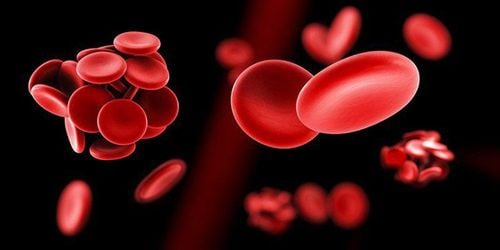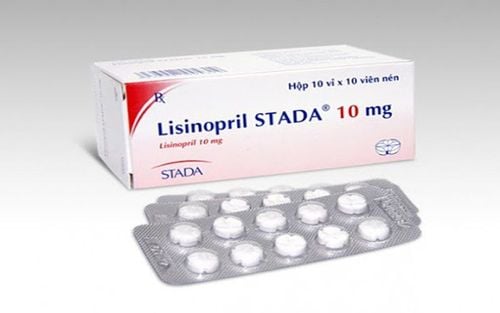This is an automatically translated article.
According to one study, the quality of life of heart failure after successful coronary intervention and 1 month hospital discharge was positively changed. There was a marked improvement in exercise capacity, stability and frequency of chest pain, as well as satisfaction with treatment.
1. How to evaluate patients with heart failure after coronary intervention?
1.1. Question
Along with the rapidly increasing number of coronary heart disease patients, the health system is also growing and the coronary intervention methods are more effective. Although there are many studies on the survival outcomes of patients with heart failure after coronary intervention, there are few data evaluating the quality of life after treatment with this method.
Quality of life is not only an issue that needs to be concerned and developed when monitoring patients after treatment, but also one of the measures and evaluation of the effectiveness of coronary intervention methods. The many patients requiring post-treatment care also highlight the importance of increasing quality of life.
On the other hand, adherence to pharmacological guidelines in patients with heart failure is important for prognosis, but thorough implementation of guidelines in routine care is not enough. To define and optimize guideline implementation, it is important to understand the prevalence and characteristics of heart failure in patients with coronary artery disease, as well as assess compliance with heart failure guidelines in patients with advanced stage disease. segment C (symptomatic).
1.2. Evaluation Criteria
Efficacy evaluation criteria before and after coronary intervention include:
Exercise capacity Stability of chest pain Frequency of chest pain Level of satisfaction with treatment Quality of life Among them , factors affecting the level of satisfaction include:
Gender Health insurance Hospital Hypertension Diabetes Dyslipidemia In addition, there are pre-existing factors such as:
3-branch disease Chronic kidney disease Cerebrovascular accident Old myocardial infarction The above criteria not only help to evaluate the effectiveness of treatment, but also contribute to a more complete care of heart failure patients after coronary intervention, improving the quality of life. life.

Độ ổn định của cơn đau ngực giúp đánh giá hiệu quả trước và sau điều trị can thiệp mạch vành
1.3. Patient condition
Patients selected for the survey must meet the following conditions:
Have successfully placed coronary artery stents Use correct and sufficient medications according to the doctor's prescription No disturbances of consciousness, mental health, hearing loss or confusion No have severe chronic diseases (cancer, chronic obstructive pulmonary disease, complicated arthritis) or major, sudden cardiovascular events.
1.4. Evaluation process
The doctor will make a follow-up sheet, explain the purpose and fully record the information. Patients will be evaluated twice: the first time is to collect data on cardiovascular status before the intervention (BMI, blood sugar, cholesterol, triglycerides...); The second time was to survey the cardiovascular status of the patient at follow-up after 1 month of successful percutaneous coronary intervention.
In addition, to analyze the safety and effectiveness of elective coronary intervention therapy in patients with complications of heart failure, another research group divided patients into 3 groups:
Control group conservative treatment (receiving standard medication); Early elective coronary intervention group (stable condition, operative risk assessment and intervention as soon as possible); Advanced percutaneous coronary intervention group (control ischemia and then elective intervention. For more severe cases of myocardial ischemia, intervene after surgical risk assessment). Follow-up visits were established at approximately 3 years, after which clinical outcomes were compared.

Chất lượng cuộc sống bệnh nhân suy tim sau can thiệp mạch vành diễn tiến lâm sàng tốt lên
2. What possibilities can happen and how to handle?
Overall, the rate of improvement of patients with heart failure after coronary intervention has been noted, especially in terms of chest pain. Specifically:
Exercise capacity: After 1 month of treatment, there is a positive change. However, factors such as age, education level, retirement, place of residence, ... all have a great influence on understanding the disease, ways to reduce risk factors and recover function after intervention. intervention, how to adapt to drugs and follow-up after the intervention... Some patients are not ready to return to their previous life. The stability of chest pain and the number of chest pain both improved. Satisfaction with treatment: Patients' trust in treatment is not only affected by the patient's passive mentality in terms of knowledge, but also by hospital overload, the Outdated medical propaganda... Quality of life: Most of the cases have improved. The quality of life of patients will be improved if exercise capacity, chest pain stability and frequency of chest pain are also better. Next, in the coronary patient population, the prevalence of stage C heart failure is high and a sizable subgroup has systolic heart failure. In general, pharmacological therapy is well performed in patients with systolic heart failure. To improve the implementation of more relevant heart failure guidelines, it is necessary to:
Increase patient awareness of the diagnosis and importance of heart failure Dissemination of knowledge about the importance of use suitable medicine. Finally, the study results showed that the survival time in the early coronary intervention group was prolonged and the survival rate increased during 3 years. The left ventricular ejection fraction also increased significantly in this group, while the left ventricular end-diastolic diameter and the BNP concentration (which helps diagnose heart failure) decreased significantly. Rates of perioperative complications and major adverse cardiac events were also reduced. Quality of life scores improved markedly. Therefore, in patients with coronary heart disease who have complications of heart failure, early coronary intervention is safe and effective.
In summary, the quality of life of heart failure patients after coronary intervention has improved, and the patient's subjective perception of health has many positive changes after coronary intervention. percutaneous rim.
Cardiovascular Center - Vinmec International General Hospital is effectively and safely applying coronary angiography, balloon angioplasty, angioplasty and coronary stenting. Accordingly, after the coronary intervention, the patient will be monitored and assessed the degree of heart failure, overall health check to ensure the best health recovery.
The entire process of examination, treatment, monitoring and evaluation after coronary artery bypass surgery at Vinmec is performed by a team of qualified, experienced and well-trained medical doctors, which should bring results. good treatment, limiting the risk of restenosis after coronary stenting.
Please dial HOTLINE for more information or register for an appointment HERE. Download MyVinmec app to make appointments faster and to manage your bookings easily.
References: ncbi.nlm.nih.gov













